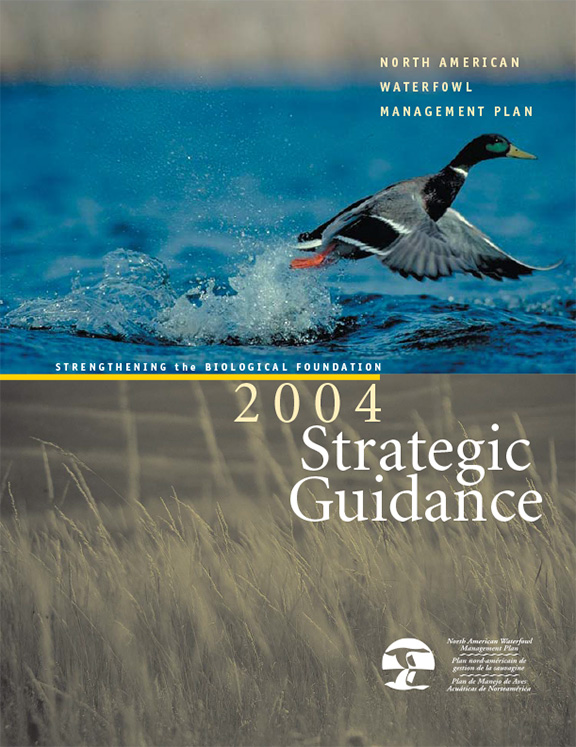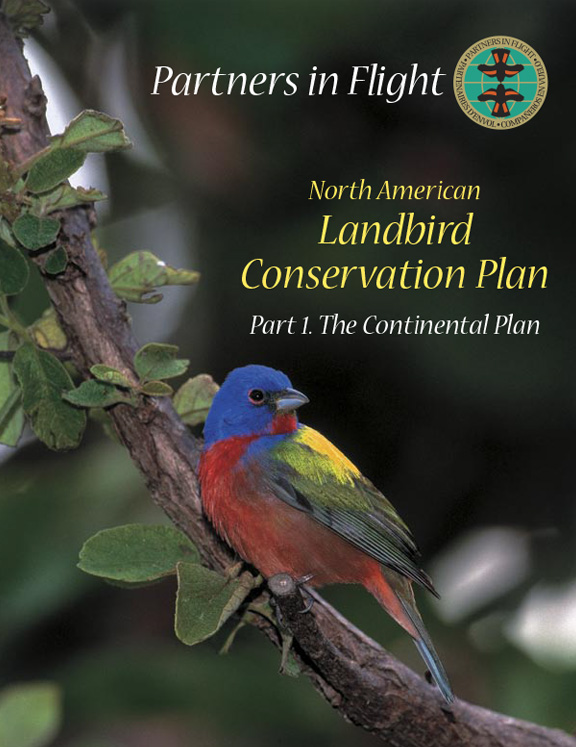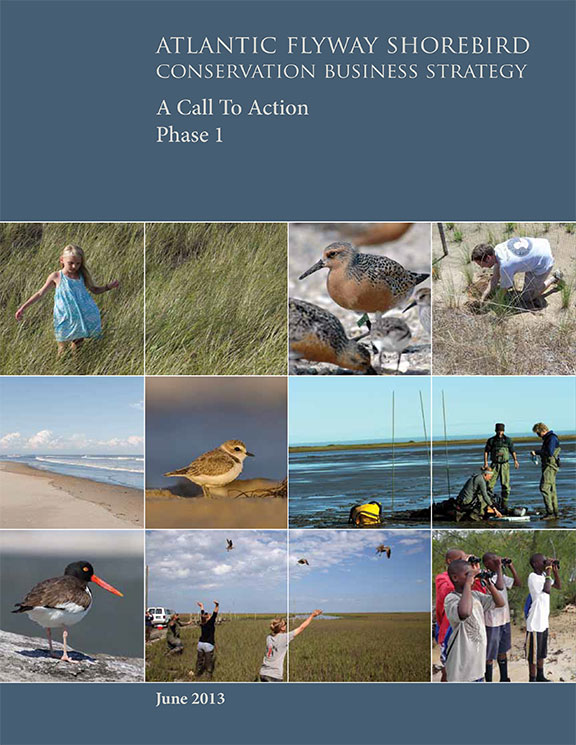National Plans

North American Waterfowl Management Plan
The North American Waterfowl Management Plan (NAWMP) was developed and signed in 1986 in response to declining waterfowl populations. This plan lays out a strategy between the United States, Canadian and Mexican (after 1994) governments to restore wetlands. Recovery of these shared resources is implemented through habitat protection, restoration, and enhancement through regionally-based self-directed partnerships known as joint ventures. The original plan was updated in 1994, 1998 and 2004.

Partners in Flight
Partners in Flight (PIF) formed in 1990 in response to growing concerns about the declining populations of many landbird species. The initial focus was on Neotropical migrants (species that breed in North America and winter in Central and South America) but the focus has since spread to include all North American landbird species.
The central premise of PIF has been that the resources of public and private organizations in North, Central and South America must be combined, coordinated, and increased in order to achieve success in conserving bird populations in this hemisphere.
Waterbird Conservation for the Americas
Waterbird Conservation for the Americas (WCA) is an independent, international, broad-based, and voluntary partnership created to link the work of individuals and institutions having interest and responsibility for conservation of waterbirds and their habitats in the Americas. The term waterbird generally refers species that are dependent upon open water or wetlands during a portion of their life cycle. The Waterbird Conservation for the Americas partnership addresses the conservation and management of 210 species of waterbirds, including seabirds, coastal waterbirds, wading birds, and marshbirds in 29 nations throughout North America, Central America, the islands and pelagic waters of the Caribbean Sea and Western Atlantic, the U.S.-associated Pacific Islands and pelagic waters of the Pacific. The North American Waterbird Conservation Plan is a product of the WCA partnership. Version 1, published in 2002, focuses primarily on colonial-nesting waterbirds. A second North American Waterbird Plan addressing other waterbird species will be published soon.
Northeast U.S. Region Waterbird Conservation Plan
The Plan was developed to focus on regional waterbird populations and habitats and associated conservation issues, and represents the next steps in waterbird conservation called for in the NAWCP in the Northeastern United States. The Plan focuses on the following 10 states: Maine, New Hampshire, Vermont, Massachusetts, Connecticut, Rhode Island, Delaware, New Jersey, New York, and Maryland and Canada’s maritime provinces.
Download the Northeast U.S. Region Waterbird Conservation Plan
Southeast U.S. Region Waterbird Conservation Plan
The Plan was developed to focus on regional waterbird populations and habitats and associated conservation issues, and represents the next steps in waterbird conservation called for in the NAWCP in the Southeastern United States. The Plan focuses on the following 13 states: Texas, Oklahoma, Arkansas, Kentucky, Tennessee, Louisiana, Mississippi, Alabama, Florida, Georgia, South Carolina, North Carolina, and Virginia.
Download Southeast U.S. Region Waterbird Conservation Plan
U.S. Shorebird Conservation Plan
Concerns over shorebirds led to the creation of the U.S. Shorebird Conservation Plan in 2000. A partnership of individuals and organizations throughout the U.S., the plan develops conservation goals for each region of the U.S, identifies important habitat conservation and key research needs, and proposes education and outreach programs to increase awareness of shorebirds and their threats.
Each year, most species of shorebirds undertake phenomenal migrations from their wintering grounds as far south as the tip of South America to breeding grounds in the Arctic Ocean. Dependent on shorelines and wetlands, both coastal and along interior waterways, shorebirds are often competing with people for dwindling open space.

Atlantic Flyway Shorebird Conservation Business Strategy
The Atlantic Flyway Shorebird Conservation Business Strategy is an unprecedented endeavor to implement conservation for shorebirds across an enormous geographic scale that involves numerous federal, state, provincial, and local governments, conservation groups, universities, and individuals. The business strategy approach emphasizes the involvement of scientists, advocates, funders, and other practitioners all working together for prioritized on-the ground actions that move toward specific, measurable outcomes. In short, this strategy presents the needs, actions, and individuals that will recover this remarkable suite of species.
View the Atlantic Flyway Shorebird Conservation Business Strategy
Northern Atlantic Regional Shorebird Plan
The North Atlantic Regional Shorebird Plan steps down the goals of the continental plan to smaller scales to identify priority species, habitat and species goals, and prioritizes implementation projects.
Download the Northern Atlantic Regional Shorebird Plan
Southeastern Coastal Plain-Caribbean Shorebird Plan
This report articulates what is needed in the Southeastern Coastal Plain and Caribbean Region to advance shorebird conservation. A separate Caribbean Shorebird Plan is under development and will be based in part on principles outlined in this plan. The plan identifies priority species, outlines potential and present threats to shorebirds and their habitats, reports gaps in knowledge relevant to shorebird conservation, and makes recommendations for addressing identified problems. This document should serve as a template for a regional strategic management plan, with step-down objectives, local allocations and priority needs outlined.
Download the Southeastern Coastal Plain-Caribbean Shorebird Plan
Western Hemisphere Shorebird Reserve Network
Western Hemisphere Shorebird Reserve Network (WHSRN) is a voluntary, non-regulatory coalition that identifies and promotes conservation of crucial sites for shorebirds, no matter whether they are used in the breeding, migratory, or “winter” season. It was created in 1985 as an ambitious and visionary approach to addressing shorebird conservation needs at an enormous scale. WHSRN’s mission is to conserve shorebird species and their habitats across the Americas through a network of key sites.


